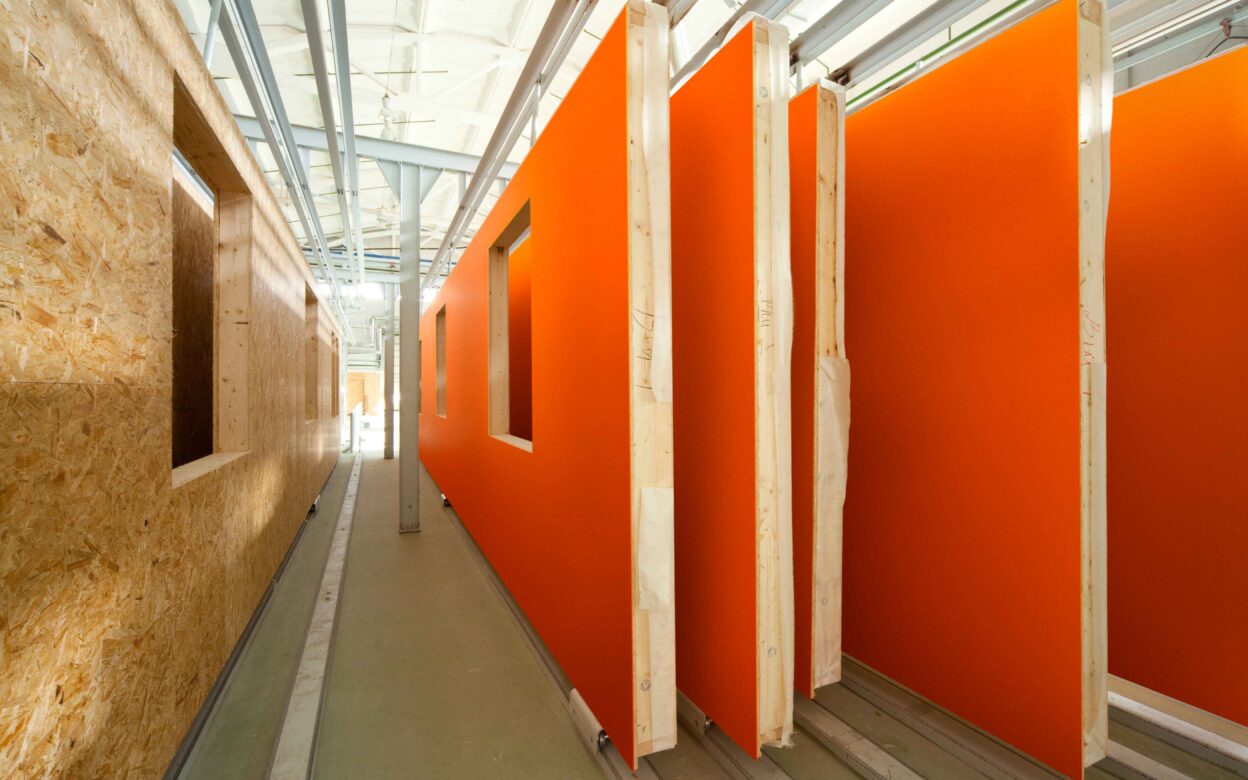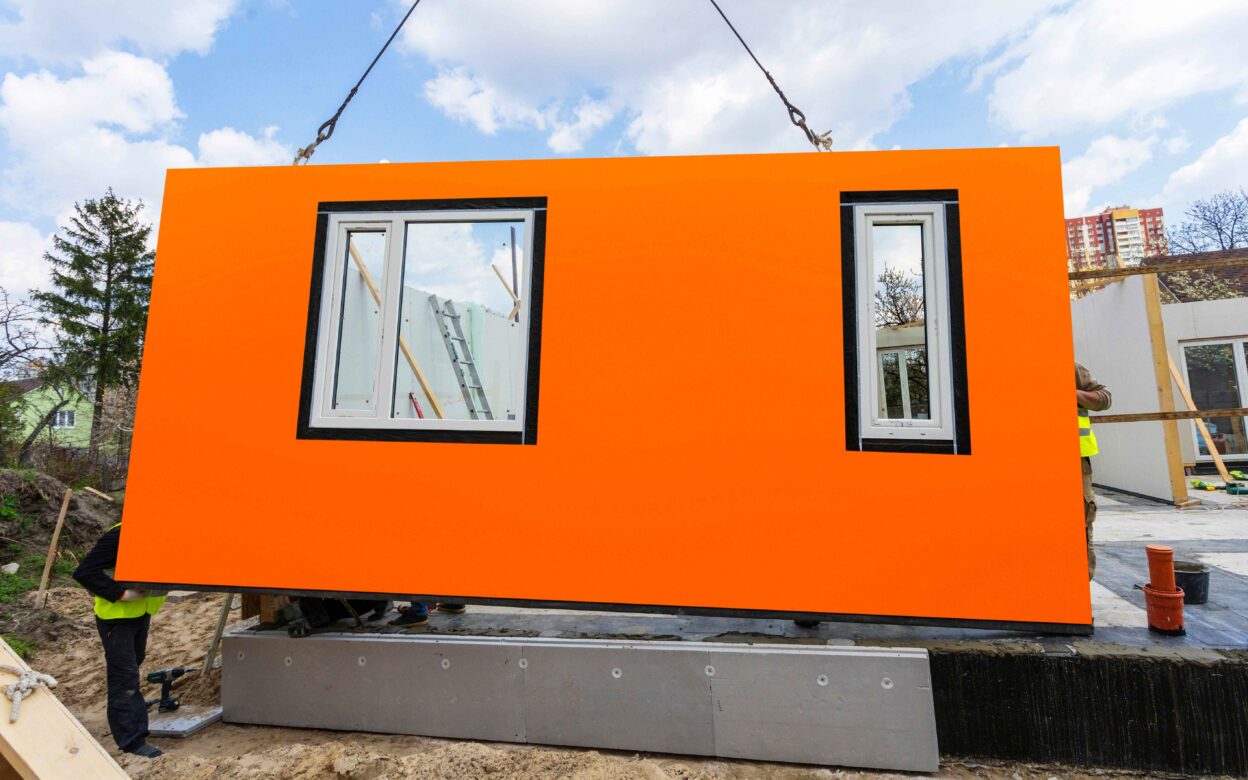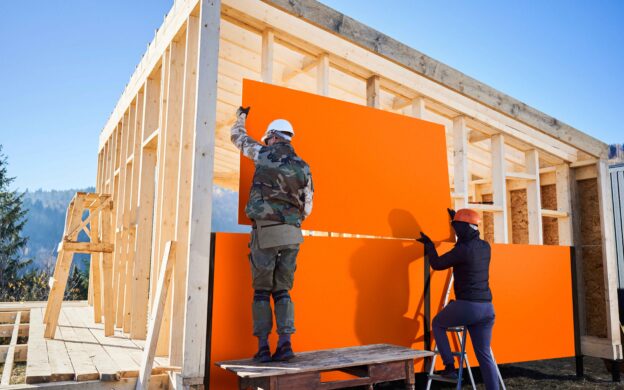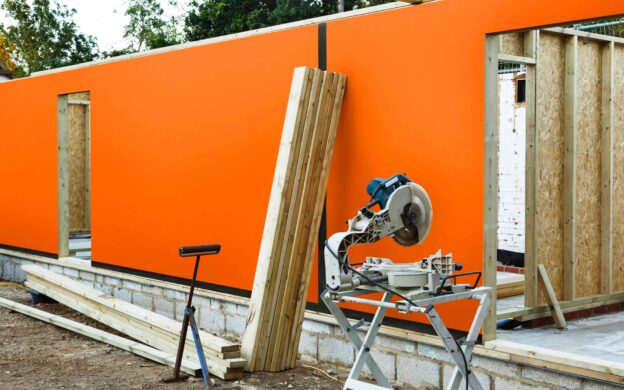

Arctek® Dryshell™, an overlay performance technology from Arclin®, has been expertly engineered to perform as an integrated, moisture resistant barrier and vapour control layer for SIP panels (SIPs) to enhance their performance and combat SIP panel vulnerabilities.
Structural insulated panels (SIP panels) – success factors
SIP panels have already achieved a major following in the building sector in the UK and the rest of Europe. Their versatility is a key attraction for builders. Generally in thicknesses from 195mm to 250mm, their structural performance makes them suitable for floors and supporting walls as well as providing a straightforward solution for roofs.
Their relative simplicity of construction onsite adds to SIP’s appeal. They’re also widely employed in offsite timber-based house manufacture and they’re an increasingly popular choice of self-builders, with an estimated 8% of UK self-build projects are now in SIPs.
Efficiency of structural insulated panels
SIP panels are a quicker build solution when compared to other methods of house building. According to HomeBuilding & Renovating magazine (HB&R), a typical 200m2 two-storey home can be built using structural insulated panels, from panel fabrication to erection of the core structure, in 24 days. That’s 55% faster than a more traditional timber frame.
Additionally, according to building materials producer Kingspan, brick and block lags even further behind. It states an average two and a half storey home constructed in SIPs takes two months less than using masonry. SIP panels are typically more expensive per m2 than a traditional timber frame panel. However their rapid construction, which results in less site time and consequent savings on labour and site insurance, leads to the SIP approach costing just 3-5% more than standard timber frame. That difference is further offset by lower fuel bills due to their insulating performance.
What are the main SIP panels vulnerabilities?
SIP panel vulnerabilities in the main are to water and humidity. If moisture gets into the structural wood boards of a panel, either due to rain during erection, or resulting from condensation inside the building, it can compromise their performance. Water ingress can even cause delamination of the timber from the insulating core.
A more traditional way in the UK to protect SIP panels from water ingress, and to add the much-needed vapour control layer, is by attaching a polyurethane housewrap type membrane onsite to the building as it is being erected. However, this still leaves SIP panel vulnerabilities from the weather during fixing. Stapling or nailing the housewrap membrane to the structure and ensuring the right degree of overlap between sheets, as well as ensuring that the more complex detail areas such as window and door frames are correctly fixed, also requires skill at a time when site skills are becoming increasingly in short supply. Traditional housewrap is also more vulnerable to snagging and tearing, from the effects of wind for instance, and must also be trimmed onsite to fit the construction, which will result in increased waste offcuts that will need to be either sent to landfill or recycled. This can add more time and cost to a project.

Arctek® Dryshell™ overlay technology helps mitigate the issues of SIPs
The Arctek® Dryshell™ protective vapour control overlay offers an entirely different approach to more traditional housewrap. The Arctek® Dryshell™ overlay is thermally fused to the SIP panel (or other timber building products like OSB for example) in the controlled environment of a panel producers’ or processors’ factory. This can be done on a single panel press or a continuous line. This results in a consistently uniform, high-quality, continuous protective vapour control coverage on the panel. With no more time-consuming fixing of housewraps over the entire building during construction on site, it accentuates SIPs panels’ quick build benefits.
Arctek® Dryshell™ overlay technology is thermally fused to the SIP which means it isn’t prone to damage on site from the effects of wind, as is the case with more traditional housewraps. The fused nature of the technology also ensures a consistent finish, and once the seams between panels are taped and sealed, the timber structure is protected from the effects of rain or humidity. This contrasts with more traditional housewraps where there is a greater margin for error in sealing the building envelope. This stems from the complex detailing (around window and door openings for instance) requiring special attention through a time consuming and laborious process of cutting and fixing the housewrap to the panels on site.
Arctek® Dryshell™ and SIP panels – the perfect match
With the building industry under increasing regulatory pressure to cut emissions, both in the construction process and in terms of a finished buildings’ energy efficiency, another strong selling point of SIP panels is their insulating performance.
SIP panel u-values are as low as 0.13W/m2K and they also offer superior airtightness, adding to their insulating effectiveness. The Arctek® Dryshell™ vapour control overlay is shown to enhance their airtightness still further. The vapour control permeability of Arctek® Dryshell™ is superior to that of conventional membranes, allowing moisture from the interior to escape the building envelope, preventing interstitial condensation. The overlay also gives a smooth, homogenous surface finish, further increasing SIP’s compatibility with adhered façades.
By choosing Arctek® Dryshell™, timber framed housing manufacturers and suppliers can make improvements to their processes and take greater advantage of the growing timber frame market in the UK. To find out more about how Arctek® Dryshell™ can benefit your timber framed house building projects, request a sample or contact us with an enquiry.


